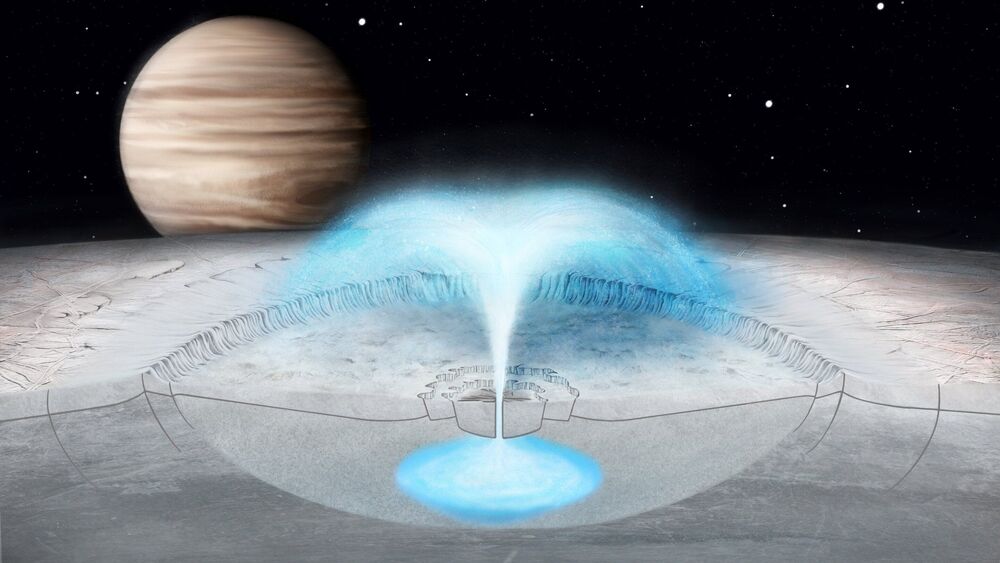On Jupiter’s icy moon Europa, powerful eruptions may spew into space, raising questions among hopeful astrobiologists on Earth: What would blast out from miles-high plumes? Could they contain signs of extraterrestrial life? And where in Europa would they originate? A new explanation now points to a source closer to the frozen surface than might be expected.
Rather than originating from deep within Europa’s oceans, some eruptions may originate from water pockets embedded in the icy shell itself, according to new evidence from researchers at Stanford University, the University of Arizona, the University of Texas and NASA’s Jet Propulsion Laboratory.
Using images collected by the NASA spacecraft Galileo, the researchers developed a model to explain how a combination of freezing and pressurization could lead to a cryovolcanic eruption, or a burst of water. The results, published Nov. 10 in Geophysical Research Letters, have implications for the habitability of Europa’s underlying ocean—and may explain eruptions on other icy bodies in the solar system.
